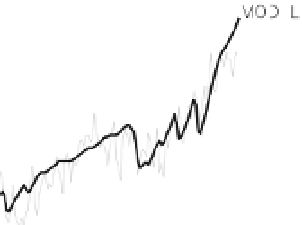Geoscience Reference
In-Depth Information
(a)
(b)
(c)
(d)
Fig. 1 Changes in a radiative forcings (DF), b atmospheric radiative heating (DF
atm
) due to the top of
atmosphere radiative forcings using scaling factors from Andrews et al. (
2010
), c simulated temperature
response using a simple energy balance model compared with HadCRUT4 observations (95 % uncertainty
range) and d precipitation response (DP) using the simple energy balance model decomposed into fast and
slow components (''-BC'' denotes simulations without the effects of Black Carbon aerosol). In d, observed
slow response is also estimated using the HadCRUT4 DT; this is combined with the model fast responses to
provide an estimated total scaling (dotted lines)
10
9
JK
-1
m
-2
is the deep ocean heat capacity. Thus, DT
m
is determined by the radiative
forcing, the restoring flux relating to feedbacks, and diffusion of energy into the deep
ocean.
Observed DF is prescribed over the period 1850-2010, based upon the Model for the
Assessment of Greenhouse gas-Induced Climate Change (MAGICC) without carbon cycle
for anthropogenic forcings,
1
and natural forcings are based upon the Goddard Institute for
Space Studies
2
(e.g., Hansen et al.
2007
) with simple extrapolation of some fields from
1990 onward (Fig.
1
a). The model is initialized at 1850 as DT
m
¼
DT
D
¼
0. Since the
1
2




























































































































































































































































































































































































































































